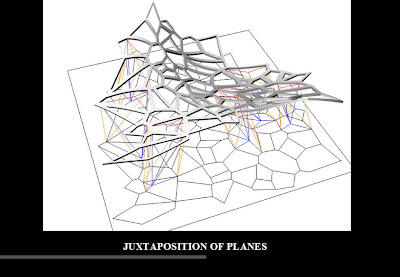
The following diagrams show the geometric generation of voronoi systems from its basic level to a more complex one.

Study of voronoi systems applied on curved surfaces.

Analysis of curvature to identify efficient zones on the skin that will perform successfully to the structural supports. The green areas indicate those zones.

Study of relationship between skin and structural supports (green areas).

Selection of the structural-supports location on both:the curved voronoi grid of the skin and the planar voronoi surface of the ground.
Juxtaposition of planes by means of structural supports based on triangulation.






No comments:
Post a Comment